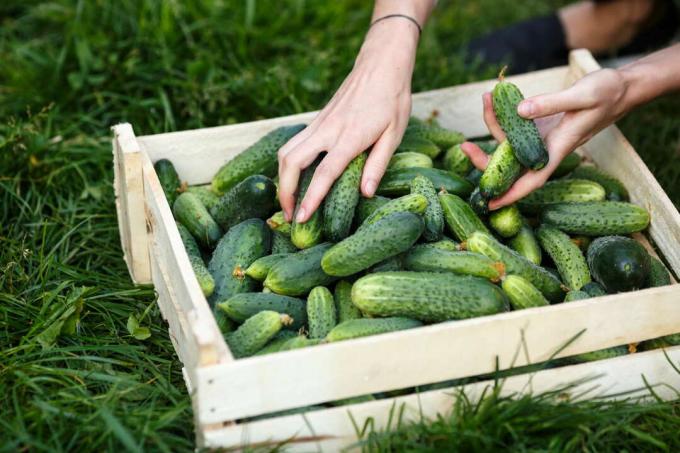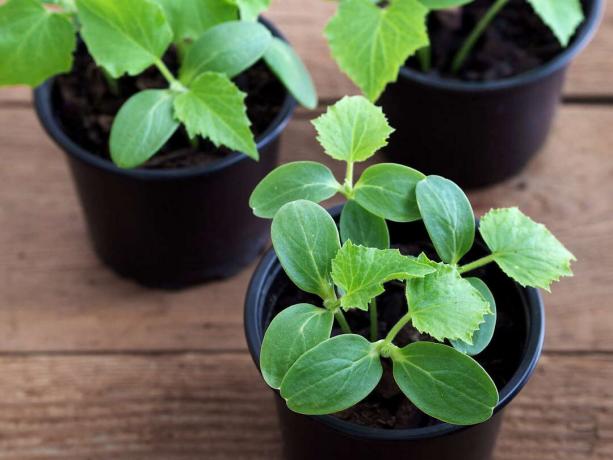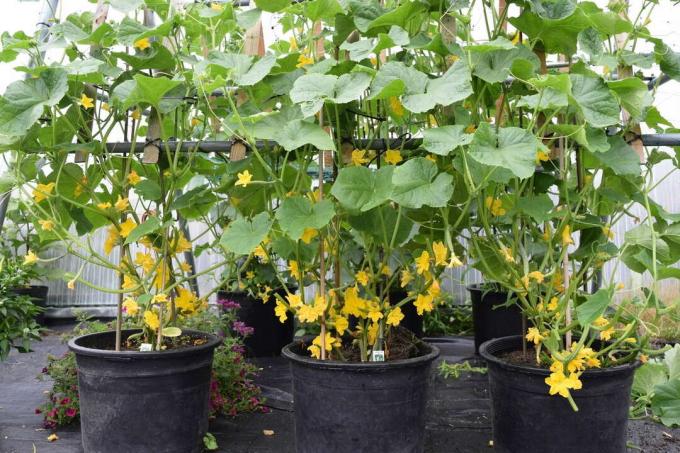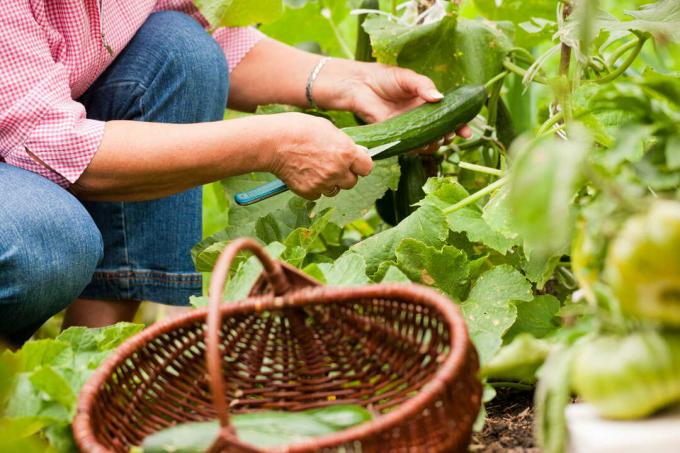With our ten tips, even the best cucumbers will soon thrive in your garden - almost as if by magic.

Whether as a salad, pickled or as a snack for in between - cucumbers are not only delicious, but also versatile and healthy. The green vegetable is one of the most common residents in German gardens and not without reason: look at a few basic rules and tips, the cucumber bears such a bounty harvest that one often wonders what to do with all the vegetables should do. We will show you with ten simple tips how you too can enjoy this luxury problem.
10. Salad or sour?
If you play with the idea planting cucumbers, one should first consider the strain choice to plan. There are roughly two types of cucumber: salad cucumbers and pickled cucumbers. As their name suggests, cucumbers are best eaten raw in salads, while pickled cucumbers are usually canned. The gherkins are much more robust and the better choice for beginners. No matter which strain you choose, make sure you choose strains that are tolerant or even resistant to
mildew are. This will save you trouble later with the dreaded disease.
9. All beginning…
Cucumbers are relatively easy to sow yourself. From the end of April, the new plants can be brought forward in the cold frame or house. To do this, three plant seeds are each placed in a pot and placed in a sunny, warm place. After a few days, the first seedlings can already be seen. But the fight for survival is tough: Only the strongest seedling in each pot should be allowed to stay and make its way into the garden. All others will be removed early. In this way you ensure that you really only have plants in the bed that will ultimately yield a rich harvest.

8. young plants
If you don't feel like growing your own cucumber seedlings, you can also buy young plants from specialist retailers. Especially with cucumbers, rearing and breeding is often more difficult because the plants are more sensitive to environmental influences. Buying young plants is a good alternative. However, please note a few basic rules here as well: only strong, healthy plants should be bought - everything that is ailing should not find its way into the home bed. When choosing a variety, you should go for grafted specimens: these are often resistant or more robust to various diseases.

7. Freedom is calling
As soon as the plants have two to four leaves, they are big enough to survive in the bed. However, plants that are already larger may not grow as well and should no longer be transplanted. However, you should definitely wait for the ice saints (mid-May), as cucumbers are very sensitive to late frosts. Plant the plants as deep as possible and pile up the soil a little - this way more side roots will form. In the case of grafted plants, however, the grafting points should be above the ground. A simple trick helps to make the move a little easier for the little cucumbers: a big one Mason jar protects the plant like a greenhouse for the first few days and ensures a good one Climate.
6. The right cookie
Cucumbers like it warm and sheltered. A place in the greenhouse is therefore ideal for the more sensitive cucumbers, as they are shielded from temperature fluctuations and strong environmental influences. But sunny, wind-protected locations in the garden can also suffice for the cucumber. As a substrate, the cucumbers like loose, humus-rich soil. The right neighborhood is also important: the rows of plants should be one meter apart, and the distances within the row should be 30 cm, so that the plants grow optimally. as good neighbors for cucumbers be valid dill, beans and salad, with tomato or cabbages the cucumber, on the other hand, does not get along so well.
5. climbing aid
Immediately after planting, the trellis should be placed next to the cucumber. In this way, the plant can make its way upwards and does not continue to grow flat on the ground. This not only facilitates the harvest: the plants grow better overall. In addition, diseases such as mildew be prevented by an upright growing plant. If the leaves are close to the ground, then they dry out worse and become a real haven for various fungal diseases that can spoil your harvest.

4. Baby change you
Cucumbers want a change of location from time to time. To be precise, cucumbers should not be planted in the same place for two consecutive years, otherwise diseases that survive in the soil (e.g. gray mold) can also affect the new plant generation infested. As a rule of thumb, a gap of four years between two cucumber crops on the same site is suggested. Since space is limited, especially in the greenhouse, and a complete change of soil is very time-consuming, it makes sense to plant the cucumbers in pots. The floor can be changed annually without much effort.

3. food and drink
Even cucumbers need regular careto bear a good harvest. Water the cucumber at regular intervals, the soil should always remain slightly moist. If the cucumber is exposed to a longer drought, the cucumbers can end up tasting very bitter and are anything but a treat for the palate. On the other hand, the cucumbers don't tolerate waterlogging either, so a sure instinct is required. Furthermore, the water should ideally be warm when watering and not wet the leaves - if the leaves become damp, the risk of mildew infection increases. As a heavy feeder, the cucumber is also happy about plenty of nutrients. A predominantly organic fertilizer like ours is best suited for this Plantura organic tomato fertilizer, which releases this long and evenly.
2. Not lucky
Cucumbers in particular are particularly susceptible to diseases. Especially mushrooms, like that powdery mildew, gray mold or sclerotina wilt cause problems for the plant. In the event of an infestation, the only option is often to limit the damage, i.e. to remove all affected plants as soon as possible. With a few tricks, however, the likelihood of your plants getting sick is reduced. Above all, humidity is a decisive factor for mushrooms - so ventilate the greenhouse regularly and use a trellis so that the leaves can dry off well after rain. The choice of more robust and resistant varieties is also recommended. Frequent changes of location, observing crop rotation and avoiding direct proximity to plants that are also susceptible to fungi (e.g. tomatoes) also help.
tip: That too Picking cucumbers can counteract diseases.

1. The work is bearing fruit
Under optimal conditions, the first cucumbers can be picked after just two months. However, restraint is not required: Frequent picking even promotes the formation of new fruits, so that the harvest is richer. With cucumbers, you can easily remove the ripe cucumbers three times a week, while gherkins can even be harvested daily. The cucumbers are ripe when the skin is evenly colored green and, in the case of cucumbers, also feels smooth. A clean, sharp knife is the right choice for cutting. If the cucumbers are torn off by force, the tendril can otherwise be injured.




